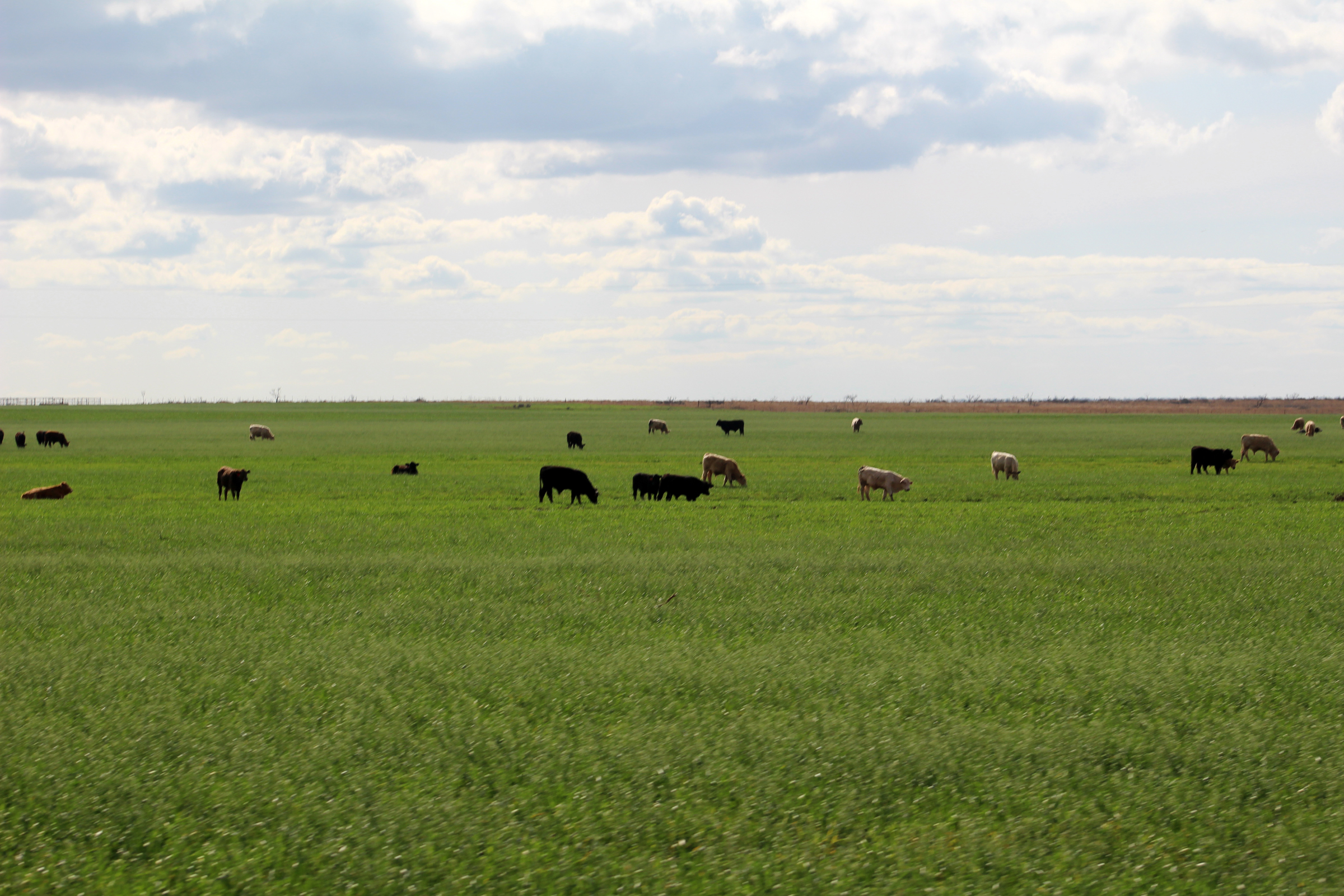Farm & Ranch
Meanwhile, back at the ranch…

By Rayford Pullen
With fall officially underway, our winter plans begin to occupy our minds, specifically as it pertains to hay needs and inventory, potential protein supplements and winter pastures.
In our neck of the woods, North Central Texas, grass growth usually ends when night time temperatures begin hitting the 45 degree mark, and if you have a vegetable garden, you’ll notice your summer- time vegetables take a dive about this same time.
While growth may cease, the quality of your forage is very good since forage quality is influenced negatively by high summer temperatures and as a result our cattle performance goes down but returns when our temperatures go down. Since the rains have come and the grass has grown, our pastures have made a really nice recovery after several years of drought.
Hay made in the fall should be a lot better than hay cut in the middle of summer when all things are considered. Fertilizer will add about three percent more protein to hay if it is cut after about a month of growth. The cooler temps this fall may offset this advantage in protein since most of us don’t do much fertilizing after June on our warm season pastures.
So, while quantity may be down, quality, including digestibility, should be up significantly. If hay stocks for your operation are still low, now would be a good time to bale with the only negative being the plants’ ability to translocate nutrients from the stems and leaves to the root system, which ensures better winter hardiness and a stronger start next spring.
In our area, winter pastures in plowed ground have been planted and those over seeded in warm season pastures are being planted now.
To read more pick up a copy of the October 2016 NTFR issue.
Farm & Ranch
Acorn Toxicity

By Barry Whitworth, DVM, MPH
With the prolonged drought, most pastures in Oklahoma end up in poor condition. With the lack of available forage, animals may go in search of alternative foods.
If oak trees are in the pastures, acorns may be a favorite meal for some livestock in the fall. This may result in oak poisoning.
Oak leaves, twigs, buds, and acorns may be toxic to some animals when consumed.
To read more, pick up a copy of the November edition of North Texas Farm & Ranch magazine, available digitally and in print. To subscribe by mail, call 940-872-5922.

Farm & Ranch
Silver Bluestems

By: Tony Dean
There are a handful of grasses on North Texas grazing lands ranchers need to know, not because they are highly desirable, but rather because they are not of much value. I call them “decom” plants, which is am acronym for “Don’t Ever Count On Me.” Silver bluestem is a “decom” grass.
Silver bluestem is a perennial which grows in all areas of Texas. It can survive in almost all soil types, and in full sun conditions or in semi shade. It grows up to three feet tall and is easily recognized with the presence of the white fuzzy seed head. Also, one of the identifying characteristics of Silver bluestem is a bend in the stems at each node, causing the plants to take on a rounded shape as they mature.
To read more, pick up a copy of the November edition of North Texas Farm & Ranch magazine, available digitally and in print. To subscribe by mail, call 940-872-5922.

Farm & Ranch
Meanwhile Back At The Ranch

By: Rayford Pullen
Fall is here which means winter is closing in on us and before we officially get into winter, we need to make sure our factories are either producing or will be producing in a few months.
We have been pregnancy testing our cows this fall and if they are not bred or nursing a calf, we are bidding them adios. With annual costs somewhere between $900.00 and $1,000.00 per cow, those cows not producing a live weaned calf are costing us quite a bit.
To read more, pick up a copy of the November edition of North Texas Farm & Ranch magazine, available digitally and in print. To subscribe by mail, call 940-872-5922.
-

 Country Lifestyles2 years ago
Country Lifestyles2 years agoScott & Stacey Schumacher: A Growth Mindset
-

 Country Lifestyles8 years ago
Country Lifestyles8 years agoStyle Your Profile – What your style cowboy hat says about you and new trends in 2017
-

 HOME8 years ago
HOME8 years agoGrazing North Texas – Wilman Lovegrass
-

 Equine1 year ago
Equine1 year agoThe Will to Win
-

 Country Lifestyles5 years ago
Country Lifestyles5 years agoAmber Crawford, Breakaway Roper
-

 Outdoor9 years ago
Outdoor9 years agoButtercup or Primrose?
-

 Country Lifestyles8 years ago
Country Lifestyles8 years agoJune 2016 Profile – The man behind the mic: Bob Tallman
-

 Country Lifestyles8 years ago
Country Lifestyles8 years agoDecember 2016 Profile, Rusty Riddle – The Riddle Way




